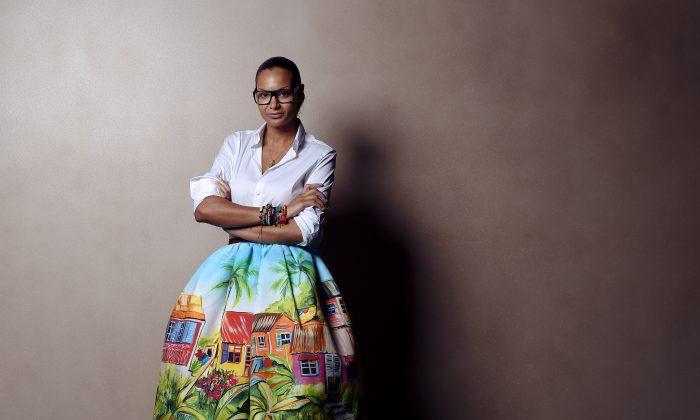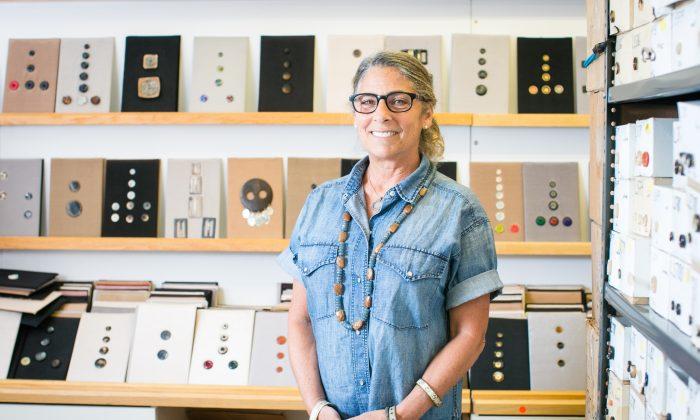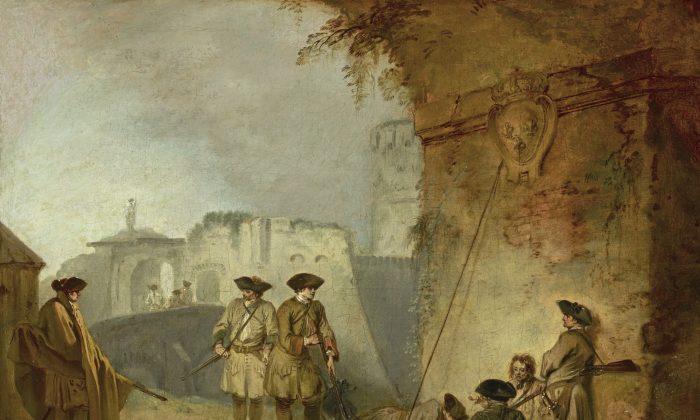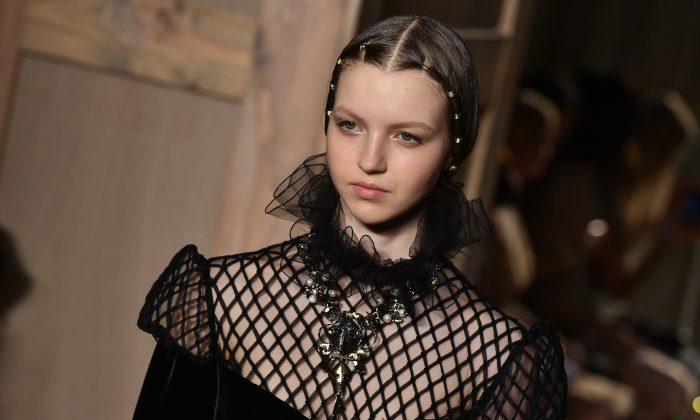NEW YORK—Italian designer Stella Jean is a relative newcomer to the fashion world, but her way of mixing prints with traditional tailoring has been steadily attracting attention globally.
Giorgio Armani described her as “the future of fashion,” and in September 2013 invited her to showcase her designs as a guest in the Armani/Teatro space during Milano Moda Donna.
“[Armani] said to me, ‘Never loose your DNA because it’s the most powerful thing, and you are recognizable—this is more than a signature,’” recounted Jean at the Fashion Institute of Technology, in conversation with Museum of FIT curators Ariele Elia and Elizabeth Way on Nov. 2.
Born in Rome to a multicultural family, with an Italian father from Turin and a Haitian mother, Jean is as Italian as they come. But growing up in Italy, the color of her skin has always been treated as a sign of being “not from here.”
The repetition of this experience is something that she recalls with exasperation, yet it has also compelled Jean to express her heritage through fashion.
The Shirt and the Skirt
“The shirt always represents my father’s side—so I will always have a mannish shirt, often striped, and the skirt represents my mother’s side, which is a wax print for the black roots of Haiti—the first black republic in the world, and a country proud of its African roots,” Jean said.
The mix of masculine with feminine, pinstripes with painterly prints, muted hues with exuberant colors, is something that goes beyond fashion for Jean. Communication and culture lead her aesthetic sensibilities. Jean doesn’t think that the world needs more “designers,” she said using air quotes, at least not ones who work only superficially and follow trends.
As soon as a fashion show finishes, the images can go around the world in a few seconds; Jean sees this as the perfect climate through which to engage in a dialogue.
“All the looks, for me, are words,” said Jean, “the idea is that I’m telling you a story, I want you to listen, not only to look at the show thinking, ‘That skirt would look good with what piece.’”
Most designers would be happy should their audience limit themselves to such pragmatic thoughts.
The conversation she wants us to have is one about a sense of place, a sense of community and connectedness, as well as the joy of expression through signs, symbols, and colors. There is also the idea of being able to appreciate authentic craftsmanship and artisanal techniques.
What’s in a Print
Working with wax-print fabric in her first collection, she said she learned not to trust appearances. What she thought was African wax-print fabric made in Africa turned out to be made in Holland. This was a shocking discovery for Jean, considering the history of the Dutch colonies in Africa.
The incident became a turning point for Jean. As a result, she decided to partner with the International Trade Centre’s Ethical Fashion Initiative project.
The project led Jean to Burkina Faso, Mali, Kenya, and Ethiopia where she got to meet and work with local artisans to make fabrics that are ethically produced, through traditional methods.
Since then, she has used each collection to highlight either a traditional technique or new fabric, presented as made by the artisans to showcase their heritage to a larger world audience.
The Spring/Summer 2015 collection took her back to Haiti. Inspired by naive art of Haiti, the collection’s highlights were painterly prints.
“It’s one of my tools to show the country in a different way. I start everything from struggle, but what I want to pass [on] is joy and happiness,” said Jean.
The idea of countercolonization is one of Jean’s most immediate concerns. She calls the migration of people who come to the West as refugees escaping political conflicts counter-colonization because this time, the east is coming to the west, with the marked difference that it’s not with a mission of oppression or submission.
As Jean sees it, we have two options: war, or we learn to work together—make fashion, share stories, and learn to appreciate different cultures on a deeper level.
“We don’t need any more ‘I love Africa’ shirts—you need to show that it’s beautiful. Buy it because you like it and because you treat it like all the other pieces of your collection or wardrobe.”
The Nostalgic and the Exotic
The Fall/Winter 2015 collection is Jean’s answer to those who go to tropical places and buy exotic prints, yet are at a loss as to what to do with them once they return to the big city. She used the 1960s silhouette, even incorporating the crinoline into the construction of coats and skirts paired with colors and patterns inspired by Indian Himalaya and Africa.
“That’s what I like when people buy one of the my skirts to mix it with some elements of your memory. It’s a kind of nostalgic and familiar touch that I have in my collection and on me all the time.”
As always, she hopes that people don’t just take her ensembles as she presents them, but mix her creations with their own pieces to tell rich, compelling, and multitextured stories.





Friends Read Free